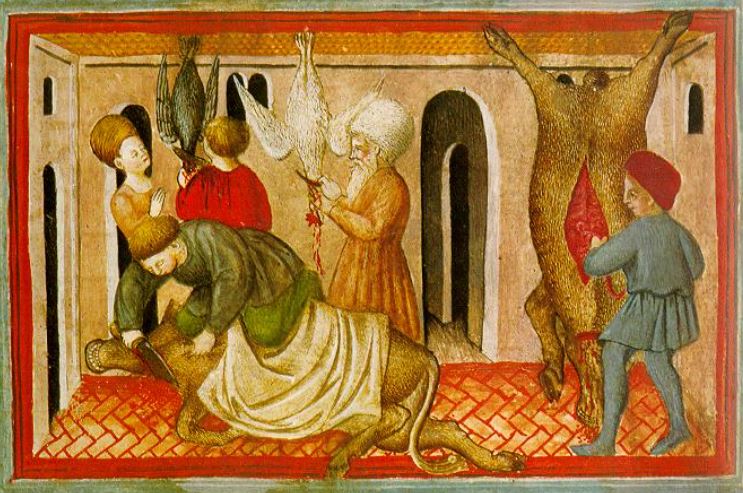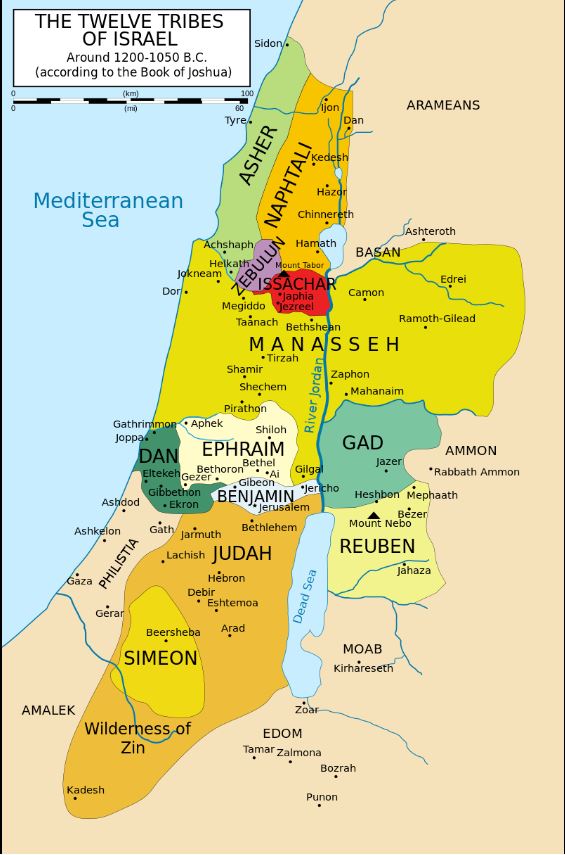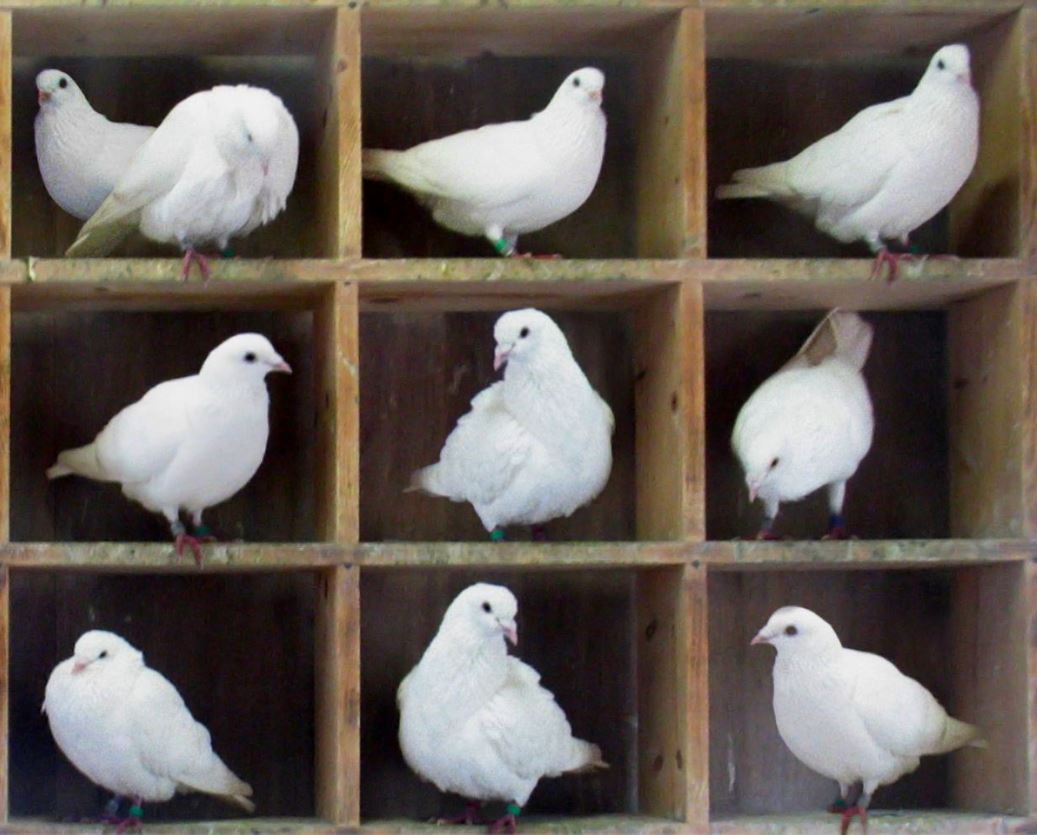Can one object turn into seven? Rabbi Yehoshua seems to think so:
“Rabbi Yehoshua said: This is what people say [about a ram]: When it is alive it makes one sound, and when it is dead it makes seven sounds.” (Zevachim 68a)
The explanation for this cryptic statement is in the tractate of Kinnim, where Rabbi Yehoshua’s statement is quoted in full:
“Rabbi Yehoshua said: This is what it meant when they said: “When [the ram] is alive it possesses one sound, but when it is dead its sound is sevenfold.” In what way is its sound sevenfold? Its two horns [are made into] two trumpets, its two leg-bones into two flutes, its hide into a drum, its entrails for lyres and its large intestines for harp strings;” (Mishnah Kinnim 3:6)
Of course the animal can provide us with more than seven instruments, for example four flutes from four leg bones. Seven is used here to illustrate the analogy of the woman who vows one pair of birds and ends up bringing seven. Rabbi Yehoshua’s colorful description helps us to picture the parts of an ancient orchestra. What were these instruments and for what were they used?
The horns are perhaps the most familiar to us. While the Mishnah uses the word חצוצרות, trumpets, those are made of silver and were used in the Tabernacle and in the Temple by the kohanim:
“Have two silver trumpets made; make them of hammered work. They shall serve you to summon [military bodies of] the community and to set the divisions in motion” (Bamidbar10:2)
The horns here are made of animal material, what we would call a shofar. Tosafot points out that they were played by the Levites.
The drum תף was the accompaniment to the song of Miriam and the women at the parting of the Red Sea:
“Then Miriam the prophet, Aaron’s sister, picked up a hand-drum, and all the women went out after her in dance with hand-drums” (Shmot 15:20)
Lyres נבל and harps כנור were used by musicians and are cited in Psalms for accompaniment to the songs there:
“Praise the LORD with the lyre;
with the ten-stringed harp sing to Him;” (Psalms 33:2)
The Biblical David would play his kinnor before King Saul to soothe him (Samuel I 16:23) and prophets like Elisha would have musicians play before them to bring on a spirit of prophecy:
“Now then, get me a musician.”
As the musician played, GOD’s hand came upon him,” (Kings II 3:15)
The flute חליל is perhaps the most ubiquitous, and is sometimes used as shorthand for all the instruments together. It is mentioned in connection with the Temple service in celebration at the Water Drawing on Sukkot:
“The flute is played on the festival of Sukkot for five or six days. This is the flute of the Place of the Drawing of the Water, whose playing overrides neither Shabbat nor the Festival.” (Mishnah Sukkot 5:1)
It is also part of the ceremonial parade of First Fruits:
“An ox would go in front of them, his horns bedecked with gold and with an olive-crown on its head. The flute would play before them until they would draw close to Jerusalem. “(Mishnah Bikkurim 3:3)
And it is played while bringing sacrifices on festive days when Hallel is said:
“And there are twelve days during the year when the flute plays before the altar: At the time of the slaughter of the first Paschal offering,; and at the time of the slaughter of the second Paschal offering, and on the first festival day of Passover; and on the festival of Shavuot; and on all eight days of the festival of Sukkot.” (Mishnah Arachin 2:3)
Flutes were also used by ordinary people to accompany a burial procession
“Rabbi Yehuda says: Even the poorest of the Jewish people may not provide fewer than two flutes and a lamenting woman [for his wife’s funeral]” (Mishnah Ketubot 4:4)
What did the music sound like? This intriguing question is impossible to answer. While we may be able to copy ancient instruments and some artisans have, we have no way of knowing the tunes and keys in which they played.
Do we have any idea what these instruments looked like? Here the evidence is clearer. The famous image on the Arch of Titus of Roman soldiers carrying away the menorah includes two trumpets:
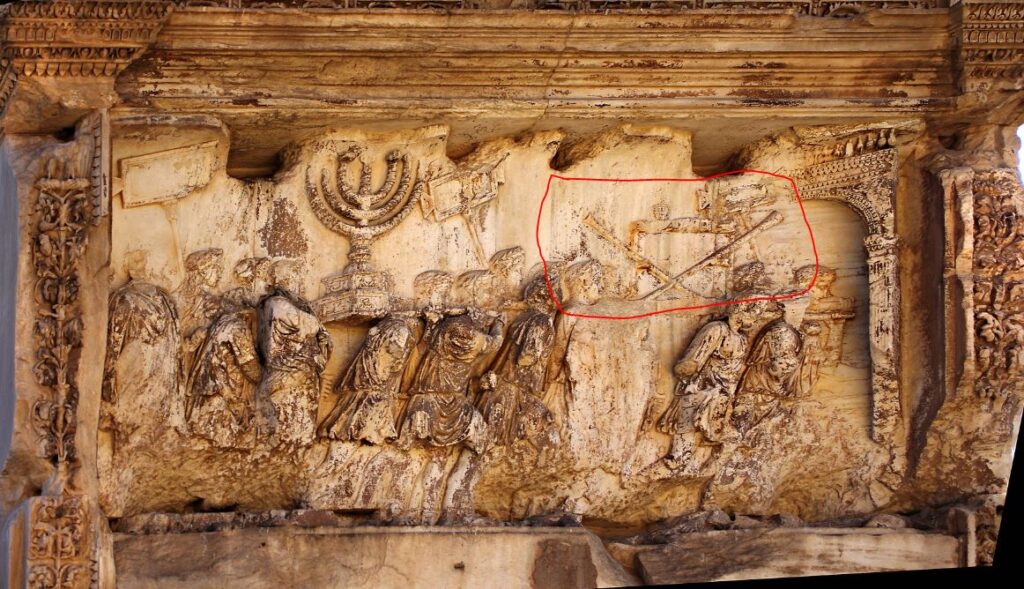
Paolo Villa, CC BY-SA 4.0 <https://creativecommons.org/licenses/by-sa/4.0>, via Wikimedia Commons
Trumpets, as well as a lyre, feature prominently on a coin struck by Bar Kokhba in the second year of his revolt against the Romans (133 CE):

http://en.wikipedia.org/wiki/User:IsraelXKV8RTallenna tiedosto – Wikimedia Commons, CC BY-SA 3.0 <http://creativecommons.org/licenses/by-sa/3.0/>, via Wikimedia Commons
We also have this depiction of the most famous harp/lyre player, King David, from a sixth century CE Gaza synagogue:

Israel Museum, Public domain, via Wikimedia Commons
These instruments were not unique to Jews. Greeks and Romans played and portrayed them as well. Here is a lyre in a Roman portrait from the first century CE:
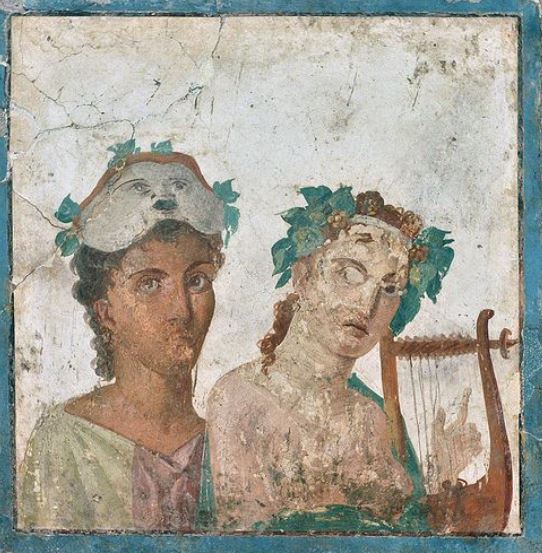
Anonymous ancient Roman artist(s), Public domain, via Wikimedia Commons
Flutes were common in Greek music. A double one called the aulos is often shown in Greek art:
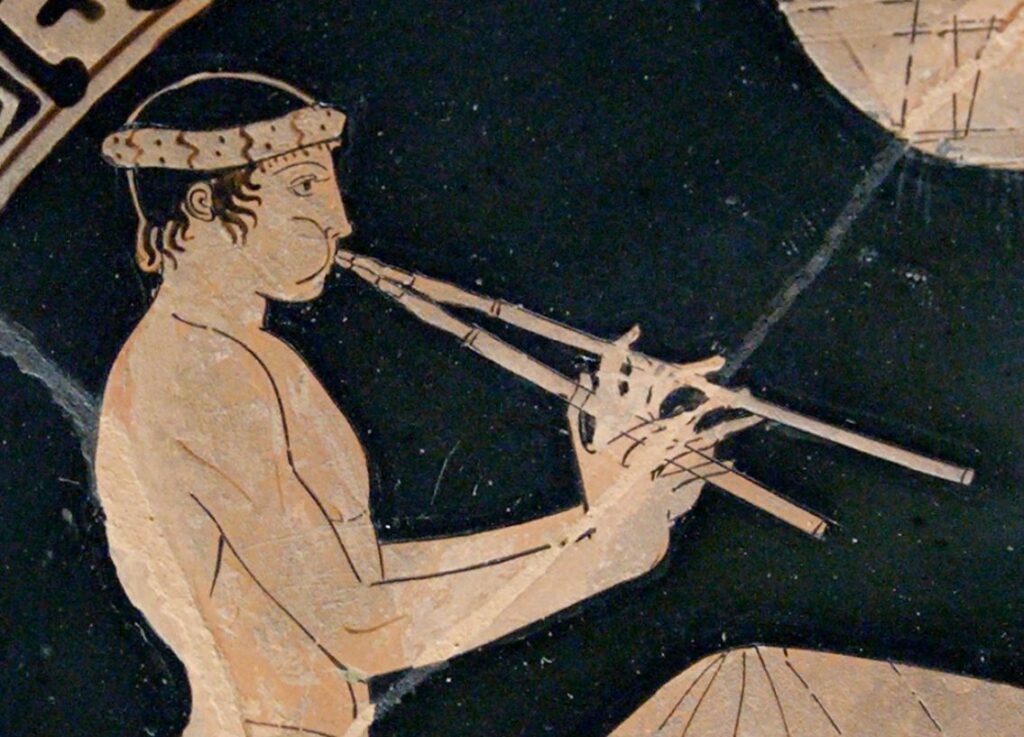
unknown artist, ancient Greecephotographer Jastrow Public domain, via Wikimedia Commons
An aulos was sometimes used to lead a procession, as in this picture:
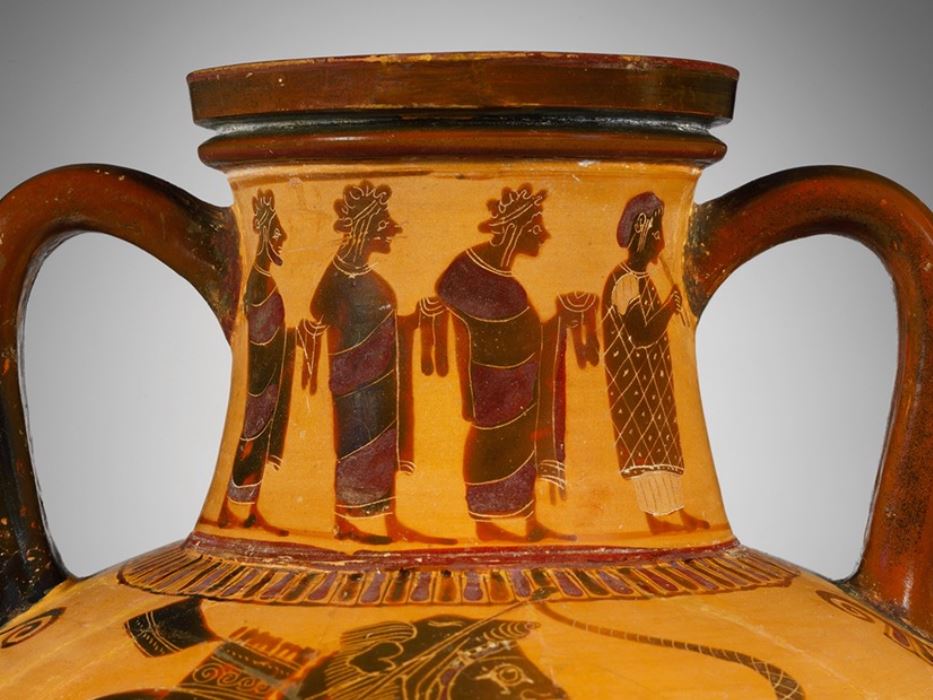
Attributed to a painter of the Princeton Group, CC0, via Wikimedia Commons
This fits nicely with the descriptions in our sources of the flute leading the parade of bikkurim or the line of mourners.
Will we ever have a chance to hear the Temple Orchestra? Today there is an artisan in Jerusalem’s Old City who is a Levite and he researches and creates ancient harps, one of which is called the shminit, the eighth, because it has eight strings. This shminit is mentioned in the musical notations to a number of Psalms:
“For the leader; on the sheminith. A psalm of David.” (Psalms 12)
The Temple Institute has also recreated the instruments but as of yet they have not found Levites to play them. Maybe there will be auditions one day?




